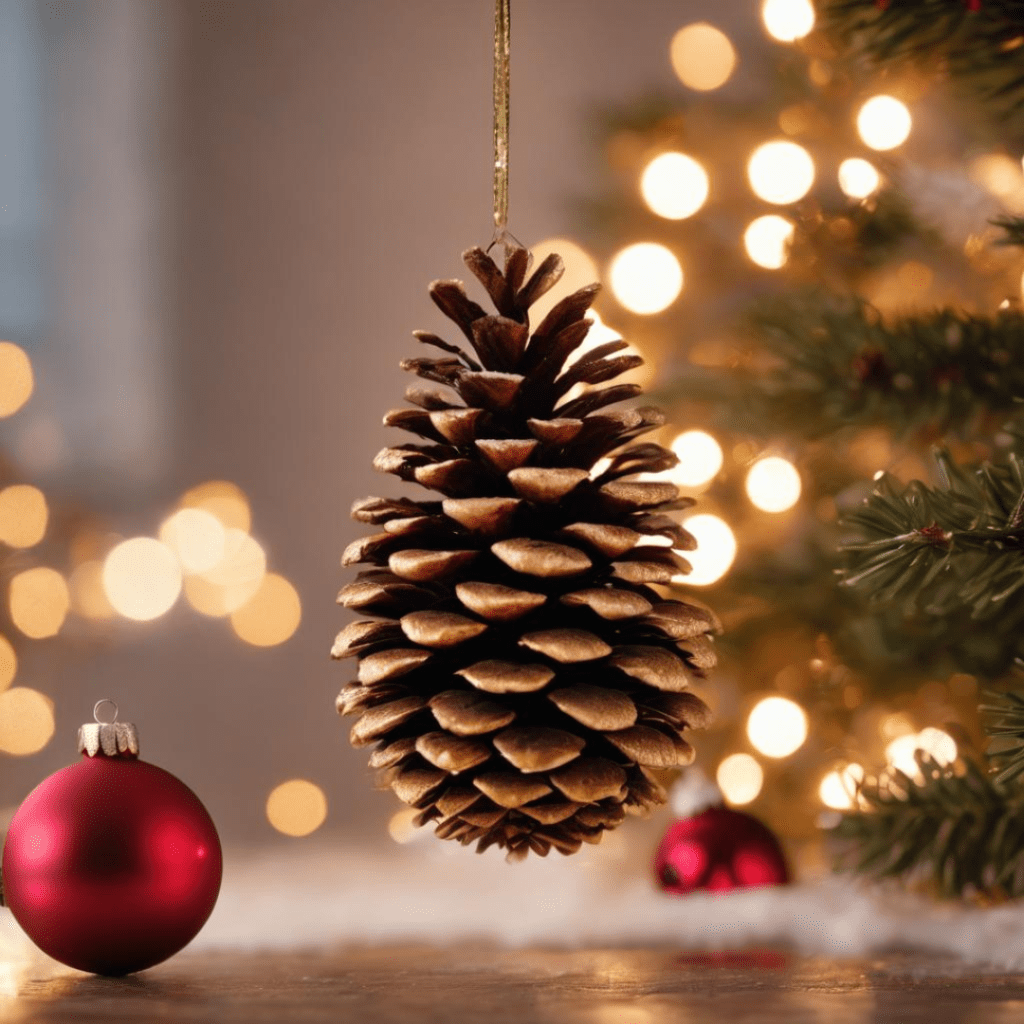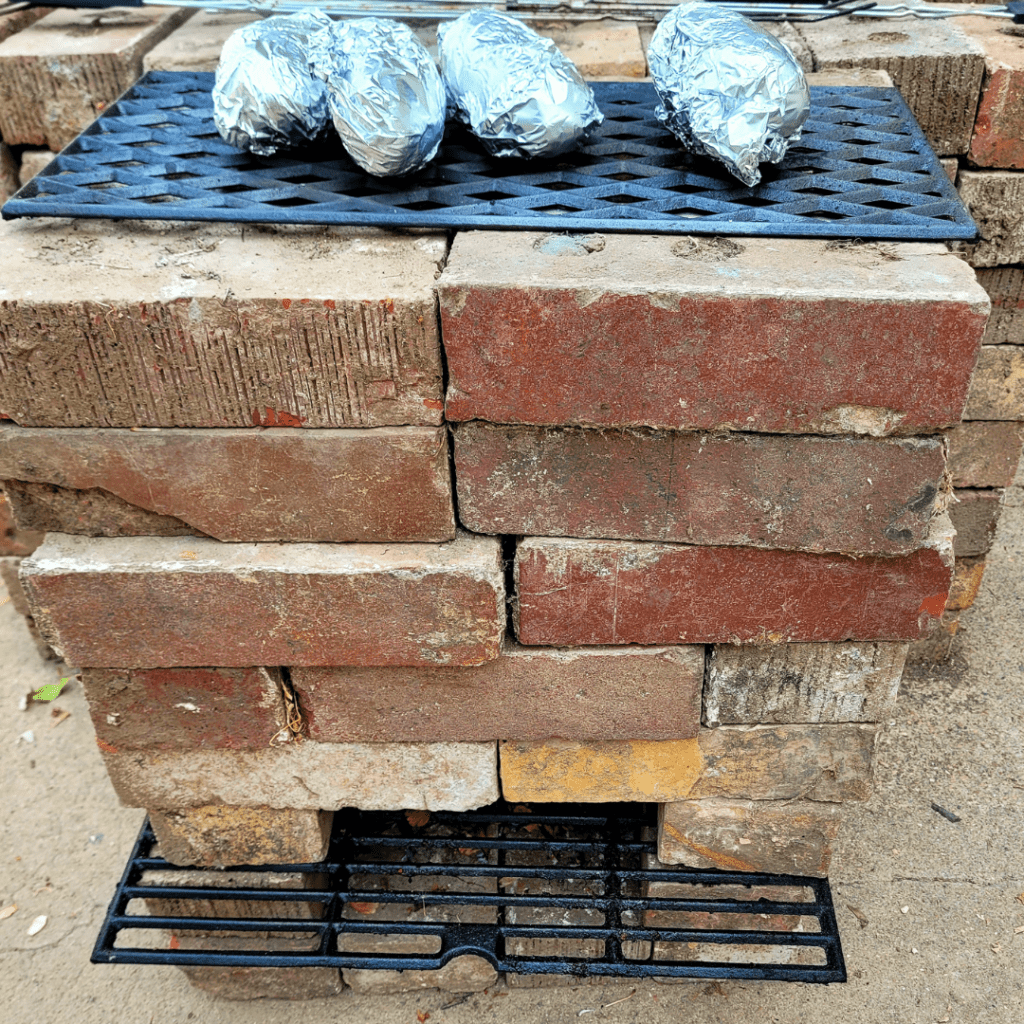Celebrate the holidays sustainably with my tips for an eco-friendly Christmas. From gifts and decorations to meals and wrapping, learn how to reduce waste and keep your celebrations green and joyful.
I’ve always loved the magic of Christmas — the twinkling lights, cozy traditions, and the joy of giving — but over the years, I started noticing just how much waste this season can create. That’s why I’ve embraced an eco-friendly approach to the holidays. In this post, I’ll share simple, practical ways to celebrate sustainably, from DIY gifts and natural decorations to mindful recycling tips and waste-free wrapping ideas. With a few thoughtful tweaks, you can enjoy all the festive cheer while honoring the environment.
This is a pinnable post. Tap or hover over any image in this post to pin to your Pinterest Boards.

Introduction to an Eco-Friendly Christmas
Understanding the Importance of Sustainability During the Holiday Season
Tis the season to be jolly, but it’s also the season to be mindful of our environmental impact. While the holidays are a time for celebration and joy, they often come with a hefty carbon footprint. From excessive waste to energy consumption, our festive habits can take a toll on the planet. Luckily, there are plenty of ways we can have a holly, jolly, and eco-friendly Christmas.
Sustainable Gift Ideas
Choosing Thoughtful and Eco-Conscious Gifts
‘Tis better to give than to receive, but it’s even better to live sustainably. When it comes to finding the perfect gift, opt for products that are both thoughtful and eco-conscious. Look for items made from sustainable materials, support local artisans, or choose experiences instead of physical gifts. And if you’re feeling crafty, DIY gifts not only show your creativity, but also reduce environmental impact.
Here are some ideas:
- Reusable and Eco-Friendly Products:
- Stainless steel or glass water bottles.
- Reusable shopping bags that are made from sustainable materials.
- Beeswax wraps as an alternative to plastic wrap.
- DIY Gifts:
- Handmade candles using natural ingredients.
- Knitted or crocheted items like scarves or blankets.
- Homemade jams, pickles, or other preserves.
- Plants and Seeds:
- Indoor plants or succulents.
- Herb garden kits.
- Tree saplings for planting.
- Experiences:
- Cooking or art classes.
- Concert or theater tickets.
- Membership to a museum or botanical garden.
- Fairtrade and Ethically Made Items:
- Fairtrade coffee or chocolate.
- Handcrafted jewelry from artisans.
- Clothing made from sustainable fabrics.
- Upcycled or Recycled Gifts:
- Upcycled fashion accessories.
- Recycled glassware or kitchenware.
- Art that is made from recycled materials.
- Zero-Waste Starter Kits:
- Bamboo toothbrushes.
- Stainless steel or bamboo straws.
- Reusable silicone food storage bags.
- Charitable Donations:
- Donating to a charity in the recipient’s name.
- Adopting an animal or tree on their behalf.
- Supporting a cause they care about.
- Energy-Efficient Gadgets:
- Solar-powered chargers.
- Energy-efficient LED desk lamps.
- Eco-friendly phone cases.
- Educational Gifts:
- Books on sustainable living or environmental issues.
- Online courses or workshops related to eco-friendly practices.
- DIY kits for making natural skincare products.
- Local and Handcrafted Gifts:
- Locally produced food or beverages.
- Handcrafted pottery or artwork.
- Handmade soaps or bath products from local artisans.
Reducing Waste During the Festive Season
Tips for Minimizing Single-Use Items
During the holiday season, single-use items often seem to multiply faster than Santa’s reindeer. But fear not, there are simple ways to reduce waste. Bring reusable bags when shopping, ditch the disposable plates and cutlery for reusable alternatives, and swap out paper napkins for cloth ones. Small changes like these can make a big difference in keeping our landfills from overflowing with holiday waste.
Managing Food Waste and Leftovers
We all know the feeling of having a fridge bursting with leftover turkey and mountains of mashed potatoes. But instead of letting those delicious remnants go to waste, let’s get creative! Use the leftovers to whip up tasty soups or casseroles, or donate them to local food banks. By managing our food waste, we can cut down on the environmental impact of our festive feasts.
Here are some tips to achieve that:
- Plan Your Menu Carefully:
- Create a detailed menu based on the number of guests.
- Consider portion sizes to avoid overcooking.
- Guest Count Accuracy:
- Confirm the number of guests attending to adjust your quantities accordingly.
- Use Leftovers Creatively:
- Plan for creative leftovers, like using roasted vegetables in frittatas or sandwiches.
- Reinvent dishes to keep meals interesting.
- Optimize Leftovers Storage:
- Store leftovers in airtight containers to maintain freshness.
- Label containers with dates to track freshness.
- Encourage Guests to Bring Containers:
- Invite guests to bring their own containers for leftovers.
- Share leftovers with guests to take home.
- Plan for Non-Perishables:
- Include non-perishable items in your menu to reduce food waste.
- Donate excess non-perishable items to local food banks.
- Serve Buffet-Style:
- Allow guests to serve themselves buffet-style to control their portions.
- This reduces the likelihood of uneaten food on plates.
- Prevent Spoilage:
- Store perishable items properly to prevent spoilage.
- Use the “first in, first out” rule in your refrigerator and pantry.
- Smart Freezing:
- Freeze leftovers that won’t be consumed immediately.
- Label and date items in the freezer for easy identification.
- Creative Leftover Nights:
- Dedicate a day to creative leftover meals.
- Combine various leftovers to create new dishes.
- Mindful Shopping:
- Make a shopping list and stick to it.
- Avoid buying perishable items in excessive quantities.
Recycling and Composting Strategies
‘Tis the season to recycle! Make sure to properly sort and recycle all the packaging and materials that come with the holiday season. And if you have a green thumb, consider starting a compost pile for all those fruit peels, vegetable scraps, and other organic waste. Composting not only diverts waste from landfills, but also creates nutrient-rich soil for your garden.
Eco-Friendly Decorations and Wrapping

Using Natural and Reusable Decorations
Deck the halls with sustainable decorations! Instead of opting for mass-produced plastic ornaments, consider using natural and reusable alternatives. Decorate with pinecones, dried flowers, or homemade garlands. You can even create your own decorations from upcycled materials. Not only will your home look festive, but you’ll also reduce waste in the process.
Here are some ideas:
- Pinecone Ornaments:
- Collect pinecones and decorate them with biodegradable glitter or paint.
- Tie a ribbon or twine to create hanging ornaments.
- Dried Citrus Slices:
- Slice oranges, lemons, or limes thinly and dehydrate them.
- String the dried slices into garlands or use them as individual ornaments.
- Cinnamon Stick Bundles:
- Tie bundles of cinnamon sticks together with twine.
- Use them as fragrant decorations on the tree or as table centerpieces.
- Natural Wreaths:
- Create wreaths using twigs, pine branches, and dried flowers.
- Add a festive touch with reusable bows or fabric.
- Fabric Scrap Garland:
- Cut old fabric scraps into strips and tie them onto a string to create a colorful garland.
- Use scraps from old clothing or linens for a sentimental touch.
- Natural Candle Holders:
- Use pinecones, acorns, or small logs as candle holders.
- Place candles on these natural elements for a rustic look.
- Felt Ornaments:
- Create felt ornaments in various shapes and designs.
- Felt is a durable and reusable material for holiday decor.
- Mason Jar Candle Holders:
- Place candles in mason jars filled with natural elements like pinecones or holly.
- Decorate the outside with reusable ribbon or twine.
- Reusable Garland:
- Invest in a durable, reusable garland made of fabric or burlap.
- Use it year after year for both indoor and outdoor decor.
- Homemade Potpourri:
- Create a potpourri mix with dried citrus peels, cinnamon sticks, and cloves.
- Display in bowls or small sachets for a fragrant and natural touch.
Alternative Sustainable Wrapping Options

Wrapping presents in paper and then watching it all get ripped off in a matter of seconds seems a bit, well, wasteful. Instead, get creative with sustainable wrapping options. Use fabric scraps, old maps, or newspapers to wrap your gifts. Or, go for reusable gift bags or boxes that can be used for years to come. Your presents will look stylish and the planet will thank you.
Here are some more alternative sustainable wrapping ideas:
- Furoshiki Wrapping:
- Learn the art of Furoshiki, a Japanese method of wrapping gifts using cloth.
- Explore different folding techniques for a stylish presentation.
- Brown Kraft Paper:
- Use unbleached brown kraft paper as a recyclable and compostable wrapping option.
- Decorate with natural twine or reusable fabric ribbons.
- Reusable Gift Bags:
- Invest in cloth or burlap gift bags that can be used repeatedly.
- They come in various sizes and designs.
- Cereal Box Gift Bags:
- Upcycle cereal boxes into gift bags by decorating them with festive paper or fabric.
- Add fabric handles for a finishing touch.
- Pinecone Gift Toppers:
- Attach small pinecones or other natural elements to the top of the gifts.
- These can serve as both decoration and a gift tag.
- Fabric Ribbon and Twine:
- Replace traditional plastic ribbons with fabric ribbons or twine.
- These can be reused or composted after use.
- Homemade Gift Tags:
- Craft your own gift tags using recycled cardboard or old holiday cards.
- Attach them with reusable twine or ribbon.
Mindful Food Choices for a Green Christmas
When it comes to having an eco-friendly Christmas, the food on our plates plays a big role. By making mindful choices, we can reduce our carbon footprint and support sustainable practices. Here are a couple of tips:
- Plan Thoughtful Menus:
- Plan your meals carefully to avoid overbuying and generating food waste.
- Consider the number of guests and their preferences when preparing the menu.
- Opt for Organic and Sustainable Ingredients:
- Choose organic and sustainably sourced ingredients when possible.
- Look for certifications that indicate environmentally friendly and ethical farming practices.
- Minimize Food Packaging:
- Select products with minimal or eco-friendly packaging.
- Bring your reusable bags when shopping for groceries.
- Buy in Bulk:
- Purchase pantry staples in bulk to reduce packaging waste.
- Bring your reusable containers to stores that offer bulk options.
- Avoid Single-Use Plastics:
- Minimize the use of disposable plates, cups, and utensils.
- Opt for reusable or compostable alternatives.
- Waste-Free Cooking:
- Embrace nose-to-tail or root-to-stem cooking to use all parts of the ingredients.
- Compost food scraps to reduce landfill waste.
- Homemade Treats and Gifts:
- Make homemade treats and gifts to avoid excess packaging and reduce the environmental impact of store-bought items.
- Mindful Beverage Choices:
- Choose locally produced beverages, such as wine or craft beer.
- Opt for drinks with minimal packaging or in recyclable containers.
- Energy-Efficient Cooking:
- Use energy-efficient appliances and cookware.
- Cook multiple dishes simultaneously to save energy.
- Encourage Leftovers:
- Plan to use leftovers creatively to minimize food waste.
- Provide reusable containers for guests to take home leftovers.
- Support Sustainable Brands:
- Choose products from brands committed to sustainability and ethical practices.
- Look for certifications like Fair Trade, Rainforest Alliance, or USDA Organic.
Opting for Locally Sourced and Organic Ingredients
Instead of reaching for ingredients that have traveled thousands of miles to reach your table, consider opting for locally sourced and organic ingredients. Not only will you be supporting local farmers and reducing transportation emissions, but you’ll also be enjoying fresh and flavorful produce that hasn’t been treated with harmful pesticides.
Reducing Meat Consumption and Choosing Plant-Based Alternatives
Meat production has a significant impact on the environment, so why not reduce your meat consumption and explore delicious plant-based alternatives? You don’t have to go full-on vegetarian or vegan, but simply incorporating more plant-based dishes into your Christmas spread can make a difference. Plus, it’s a great opportunity to get creative in the kitchen and discover exciting new flavors!
Sustainable Travel and Transportation Tips
The holiday season often involves traveling to visit loved ones, but that doesn’t mean we can’t be mindful of our impact on the planet. Here are a couple of tips for sustainable travel and transportation:
Exploring Eco-Friendly Modes of Transportation
Consider opting for eco-friendly modes of transportation, such as trains or buses, instead of flying or driving alone. Not only can these alternatives be more environmentally friendly, but they can also offer a unique and enjoyable travel experience.
Planning Efficient Routes and Carpooling
If you do need to drive, plan your routes efficiently to minimize both distance and time spent on the road. Additionally, carpooling with friends or family members heading in the same direction can significantly reduce the number of vehicles on the road, not to mention make the journey more fun and memorable.
Supporting Local and Ethical Businesses
While exchanging gifts is a common tradition during the holiday season, we can make a conscious effort to support local and ethical businesses. Here’s how:
- Research Local Businesses:
- Take the time to identify local businesses in your community.
- Explore farmers’ markets, boutique shops, and artisanal stores.
- Explore Small Businesses Online:
- Look for local businesses online, especially those with e-commerce platforms.
- Support local makers and producers who sell their products through websites or social media.
- Check for Ethical Certifications:
- Look for businesses with ethical certifications, such as Fair Trade, B Corp, or other recognized standards.
- These certifications indicate a commitment to social and environmental responsibility.
- Read Reviews and Testimonials:
- Research businesses and read reviews from other customers.
- Positive reviews can give you confidence in the quality and ethics of a business.
- Support Local Restaurants and Cafes:
- Choose locally-owned restaurants and cafes for holiday meals or catering.
- Consider purchasing gift cards for loved ones to enjoy local dining experiences.
- Opt for Handmade and Artisanal Gifts:
- Explore local artisans and craftsmen for unique, handmade gifts.
- Handcrafted items often carry a personal touch and are produced with care.
- Encourage Sustainable Practices:
- Choose businesses that prioritize sustainability.
- Look for eco-friendly packaging, waste reduction initiatives, and other green practices.
- Ask for Recommendations:
- Seek recommendations from friends, family, or local community groups.
- Word of mouth can lead you to hidden gems in your area.
- Consider Local Services:
- Look for local service providers for needs such as home maintenance, pet care, or professional services.
- Support local experts and entrepreneurs.
- Promote Local Businesses on Social Media:
- Share your positive experiences with local businesses on social media.
- Tag and promote them to help them reach a broader audience.
Shopping at Local Markets and Fair Trade Stores
Instead of relying solely on big chain stores, explore local markets and fair trade stores in your community. Not only will you discover unique and meaningful gifts, but you’ll also be supporting local artisans and businesses that often prioritize sustainable and ethical practices.
Choosing Sustainable Brands and Products
When purchasing gifts, look for brands and products that prioritize sustainability. From eco-friendly packaging to ethically sourced materials, there are plenty of options available. By consciously supporting these businesses, you can help drive a positive change towards a more sustainable future.
Eco-Friendly Holiday Traditions
Incorporating sustainable practices into your holiday traditions can add an extra layer of meaning and help reduce your environmental impact. Here are a couple of ideas to get you started:
- Nature-Inspired Decorations:
- Decorate your home with natural elements like pinecones, evergreen branches, and dried flowers instead of plastic or synthetic decorations.
- Homemade Ornaments:
- Create personalized and eco-friendly ornaments using recycled materials or natural items found in your surroundings.
- Handmade Gifts:
- Embrace the tradition of giving handmade gifts, such as knitted scarves, homemade candles, or baked goods.
- Plant a Tree Together:
- Start a tradition of planting a tree together as a family during the holiday season. It’s a symbolic and environmentally friendly activity.
- Charitable Giving:
- Make a tradition of giving to charities or volunteering during the holiday season instead of focusing solely on material gifts.
- Local and Sustainable Feasting:
- Source locally produced, organic, and sustainable ingredients for your holiday meals. Support local farmers and markets.
- Energy-Efficient Light Displays:
- Use LED lights for your holiday decorations to save energy. Consider a more modest and energy-efficient display.
- Minimalist Decor:
- Embrace a minimalist approach to holiday decorations, focusing on a few meaningful and reusable items rather than excessive decor.
- Upcycled Crafts:
- Engage in holiday crafting using upcycled materials, such as turning old sweaters into stockings or creating ornaments from scrap fabric.
- Local Holiday Events:
- Attend local holiday events and markets to support community celebrations and reduce the need for travel.
- Sustainable Candlelight:
- Use beeswax or soy candles instead of traditional paraffin candles, which are often petroleum-based and less environmentally friendly.
- Waste-Free New Year’s Resolutions:
- Start a tradition of setting eco-friendly New Year’s resolutions as a family to reduce your environmental impact in the coming year.
Incorporating Sustainable Practices into Festive Customs
Whether it’s using reusable wrapping paper or opting for LED lights on your Christmas tree, finding ways to incorporate sustainable practices into your festive customs can make a difference. Small changes can have a big impact when multiplied across households.
Creating New Traditions with a Green Focus
Consider starting new traditions that have a green focus. This could involve planting a tree instead of buying a cut Christmas tree, organizing a neighborhood clean-up day, or even volunteering at a local environmental organization. These activities not only foster a sense of community, but also promote a more sustainable way of celebrating the holiday season.
Conclusion
Remember, having an eco-friendly Christmas doesn’t mean sacrificing the joy and excitement of the holiday season. By making conscious choices and embracing sustainable practices, we can all contribute to a greener and more joyful celebration.
By incorporating eco-friendly practices into our Christmas celebrations, we have the power to make a positive impact on the environment. From choosing sustainable gifts and reducing waste to embracing mindful food choices and supporting local businesses, every small step counts. Let’s make this holiday season a time of joy, togetherness, and sustainability. Together, we can create a greener and more eco-friendly Christmas for generations to come.
Make your holidays even more sustainable by checking out my full guide to eco-friendly living at home for practical tips across every area of your household.

Frequently Asked Questions
1. Why is having an eco-friendly Christmas important?
Having an eco-friendly Christmas is important because it helps reduce our environmental impact during a time when consumption and waste tend to increase. By making sustainable choices, we can minimize resource depletion, reduce carbon emissions, and protect the planet for future generations.
2. Are eco-friendly gifts less exciting or meaningful?
No, eco-friendly gifts can be just as exciting and meaningful as traditional gifts, if not more. Sustainable gifts often have a unique story behind them, are made with care and craftsmanship, and promote ethical practices. Additionally, they can inspire others to adopt eco-conscious habits and contribute to a more sustainable world.
3. How can I reduce food waste during the festive season?
To reduce food waste during the festive season, try planning your meals in advance, portioning meals correctly, and storing leftovers properly. Consider donating excess food to local food banks or composting organic waste. Being mindful of portion sizes and encouraging guests to take only what they can consume also helps minimize food waste.
4. How can I make sustainable choices while still enjoying Christmas traditions?
You can make sustainable choices while still enjoying Christmas traditions by making small adjustments. Consider using natural and reusable decorations, opting for eco-friendly wrapping alternatives, and incorporating sustainable practices into your festive customs. Embracing sustainability doesn’t mean giving up on traditions, but rather finding creative ways to celebrate while reducing environmental impact.
Summary
I hope I have inspired you to learn more about how to have an eco-friendly Christmas with these helpful tips and products. Here are some other links you may be interested in reading!
How to Winterize Your Home: Prepare for Jack Frost’s Wrath!
Proven Hacks to Make Your Christmas Tree Survive
What Thanksgiving Teaches Us About Survival
Homeless Survival Hacks to Overcome Adversity
Is Your Car Ready for Winter? The Ultimate Checklist for Your Winter Emergency Car Kit
What The Walking Dead Can Teach Us About Survival: The Walking Dead Survival Tactics
Get Lockdown Ready: Best Dollar Tree Survival Items
Understanding Water Purification Methods for Survival: Best Practices Explained
Thirsty for Survival: Expert Guide to Emergency Water Prep Tactics
The Benefits of Urban Homesteading: Revolutionize Your City Life
Practical Pantry Prepper: Essential Guide
How to Grocery Shop Once a Month
What Should Be in A 72-Hour Survival Kit?
Buy or Die: Prepper Items You Need Now
How to Learn 58 Self-Sufficient Skills Right Now
Road to Self-Sufficiency: How to Start Your Journey
If you were encouraged by this post, I invite you to check out my FREE Printables Page for fun free printables, planners, and charts.
ENTER MY FREE Printables Page HERE
Blessings,
The Off Grid Barefoot Girl





